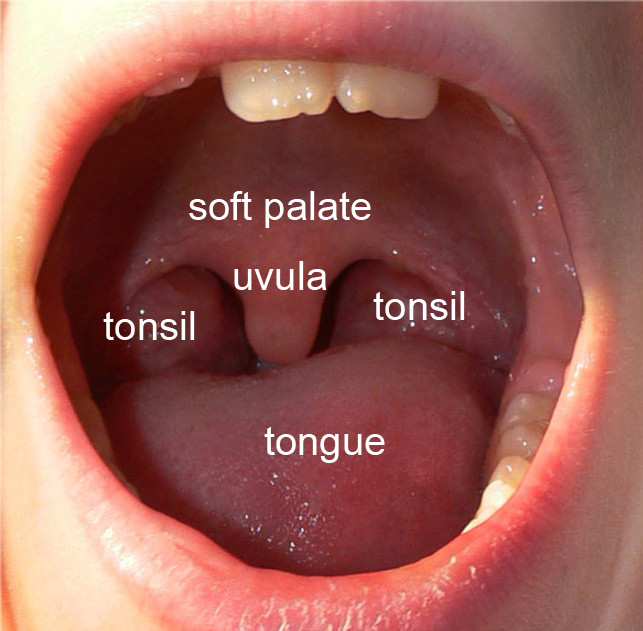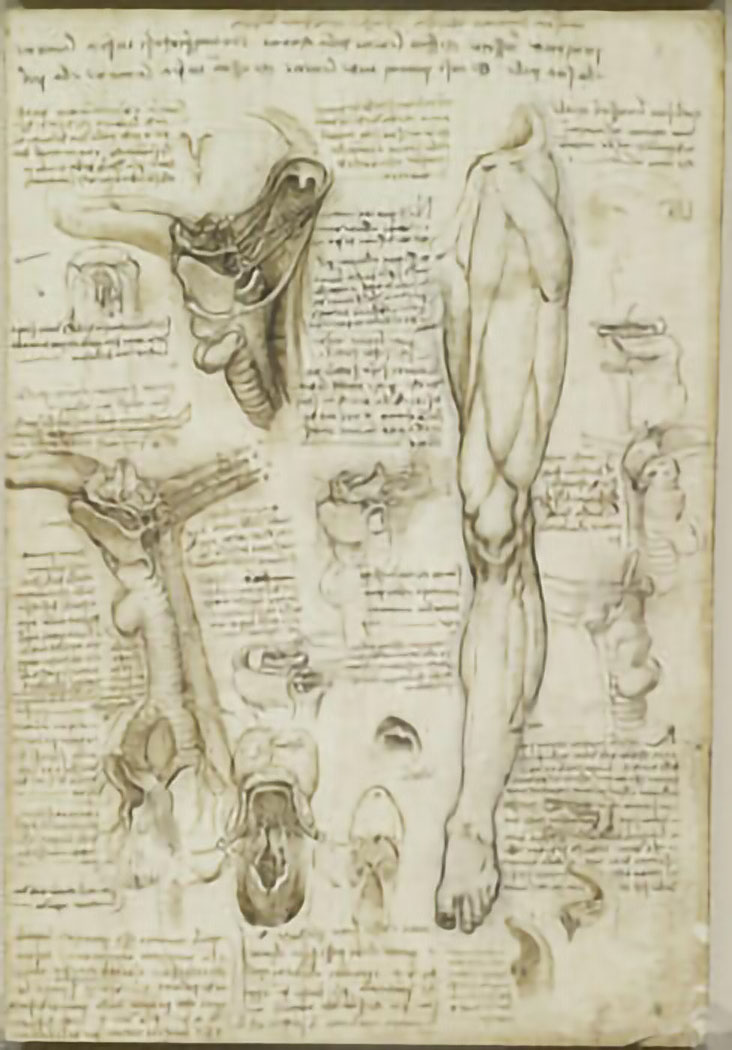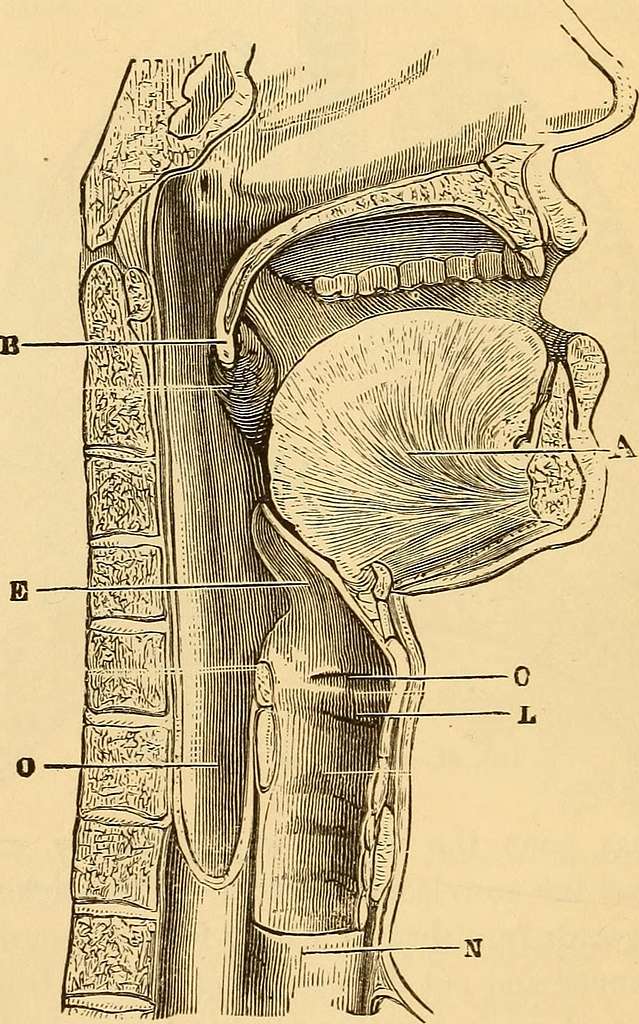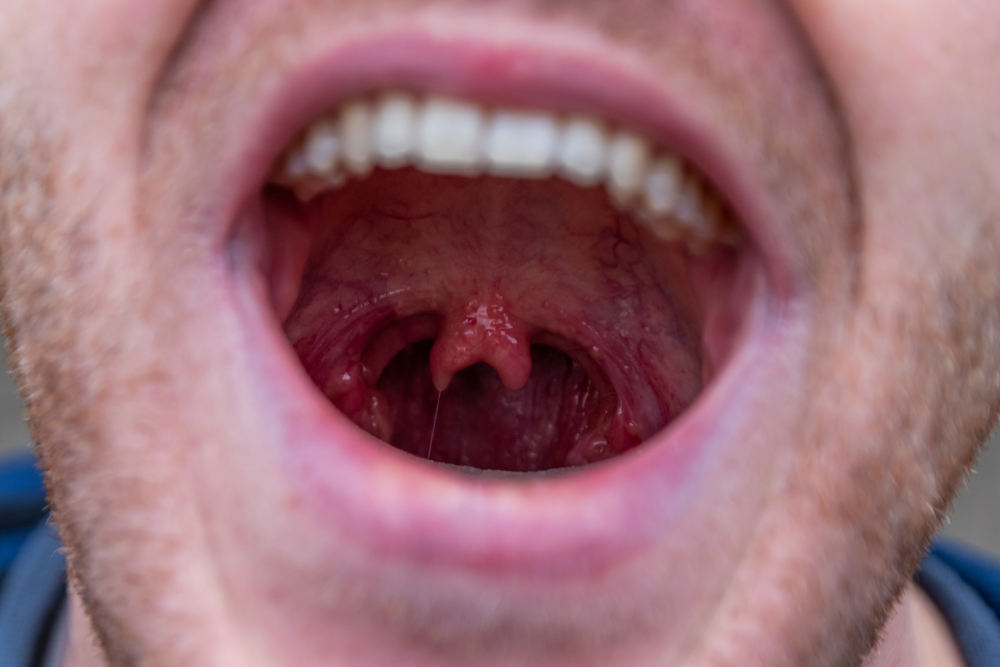Table of Contents (click to expand)
For such a tiny, yet largely ignored organ, scientists have a list of best guesses as to what the uvula does in the human body. Its proposed list of functions include aiding in speech, lubricating the mouth, and inducing the gag reflex.
Pronounced as yoo-vyoo-luh, the uvula is the weird punching bag-like sac that hangs above your throat. Open your mouth wide and you’ll see its pendulous form dangling in the dark recesses of your mouth, more specifically, from your soft palate. This is why it is called the palatine uvula.
In your mouth, your teeth chew, your muscly tongue tastes and tosses the food around, your cheeks keep everything contained, helping you crush your food with focused power. But what about the uvula? Is it just decoration, like an ornamental chandelier you put up? Or is it a vestigial organ, once useful, but now just a fossil in your body?

Uvula, A History
Throughout history, we’ve had all sorts of ideas about what the uvula does: they are good, bad and ugly, but mostly contradictory, as the 1992 paper titled The Riddle of the Uvula reflects.
Galen, an incredibly influential Roman medic whose ideas about the human body—some accurate and others not so accurate—stuck around for 1500 years, thought that the uvula helped us talk. Inspecting this idea about speech, another investigator thought that the uvula made us sound less nasal, basically, preventing us from sounding like we always have a cold.
There are disagreements. Several investigators have said removing the uvula either made no difference to speech or, quite the opposite, improved speech.
Galen also had this to say about the uvula’s role in the body, “[…] the incoming air is first divided by it [uvula], and the violent rush of the air and hence its coldness are broken up […]”
The left-handed, mirror-writing genius, Leonardo Da Vinci, studied anatomy in Renaissance Italy for many years. When he studied the anatomy of the mouth, he attributed to the uvula the sense of taste.

Other have suggested that the uvula keeps food from going upwards into your nose when you swallow.
Many non-western cultures around the world recognized the uvula’s importance, in that it could cause disease. Some cultures around the world therefore remove the uvula as a potential prophylactic against disease.
These are widely varied functions, many of which have little evidence to back them, and in some cases, such as with speech, the evidence is contradictory.
Also Read: What Is The Uvula And What Does It Do?
Uvula, The Structure
The form and composition of an organ hint at its function. To understand what the uvula does in the human body, we must look at what it’s made of, and how that material behaves.
The upper part of your mouth is called the palate. We’ve divided it into two types: the hard palate is bony and contains your teeth; the soft palate is composed of soft tissue at the back of your throat. You can feel the transition of the hard palate to the soft palate if you move your tongue from your teeth towards your throat.
The uvula dangles just above the esophagus, from the soft palate.
Da Vinci writes in his notes, “The uvula is the dripstone from which falls the humor that descends from above and falls by way of the oesophagus to the stomach […]”

The uvula is made of many different types of tissues. It has connective tissue, glandular tissue (cells that secrete a substance), and muscle tissue. It is connected to the soft palate by a muscle called the muscularis uvulae.
Knowing that the uvula has three types of cells and is located in the back of the mouth hanging over the esophagus, what can we infer about its function?
Also Read: How Is Saliva Formed, What Does It Contain, And What Does It Do?
Uvula: More Than One Function?
As it turns out, you can infer many functions from what we’ve described.
The first is that it is responsible for, along with the base of the tongue and the area around the tonsils, inducing the gag reflex. This is something you can test, even if you’re not trying to! Try to touch your uvula with your finger and you should begin to gag. This is the function that most medical advice blogs attribute to the uvula.
One function of the uvula that’s not immediately apparent and not as easily testable by the average person is that it produces saliva—Da Vinci’s “dripstone”. The glandular tissue in the uvula secretes watery saliva that lubricates the mouth. We have other salivary glands that also produce saliva. As researchers from the Royal National Throat Nose and Ear Hospital showed, throat dryness results after removing the uvula.
Now, as for the speech proponents. The uvula might have a role in languages that create sounds using the uvula. It’s called the uvular trill, a feature of languages such as Arabic, French, German, Dutch, Portuguese, Danish, Swedish, Norwegian and modern Hebrew.
A 1992 paper found that among the mammals they studied—sheep, calves, foals, dogs, cats, pigs, Macaca Mulata, Papio anabis baboons and chimpanzees—humans were the only mammals with a well developed uvula. They write, “These findings support our hypothesis that the uvula is a phylogenetic development of an accessory speech organ, specialized for lubrication, and represents another feature that distinguishes man from other mammals.”
Conclusion
However, all is not well.

A long uvula or a swollen uvula can be the cause of snoring. When the snoring gets too bad, some people even opt to get their uvulas removed. The uvula can also get swollen due to infections, since it does contain lymphoid tissues that harbor immune cells.
The original or intended function of the uvula is still just a theory. What we do know for a fact is that sometimes the uvula can be a hinderance to living, rather than helpful in any specific capacity.
How well do you understand the article above!

References (click to expand)
- Croft, C. B., & Golding-Wood, D. G. (1990, November). Uses and complications of uvulopalatopharyngoplasty. The Journal of Laryngology & Otology. Cambridge University Press (CUP).
- Finkelstein, Y., Meshorer, A., Talmi, Y. P., Zohar, Y., Brenner, J., & Gal, R. (1992, September). The Riddle of the Uvula. Otolaryngology–Head and Neck Surgery. Wiley.
- Helwany M, Rathee M. Anatomy, Head and Neck, Palate. [Updated 2022 Jun 11]. In: StatPearls [Internet]. Treasure Island (FL): StatPearls Publishing; 2023 Jan-. Available from: https://www.ncbi.nlm.nih.gov/books/NBK557817/
- Schuez, I., & Alt, K. W. (2021, October). Leonardo da Vinci and dental anatomy. Journal of Anatomy. Wiley.
- PROCTOR, D. F. (1974). THE NOSE, AMBIENT AIR, AND AIRWAY MUCOSA. A PATHWAY IN PHYSIOLOGY. Bulletin of the History of Medicine, 48(3), 352–376. http://www.jstor.org/stable/44450146
